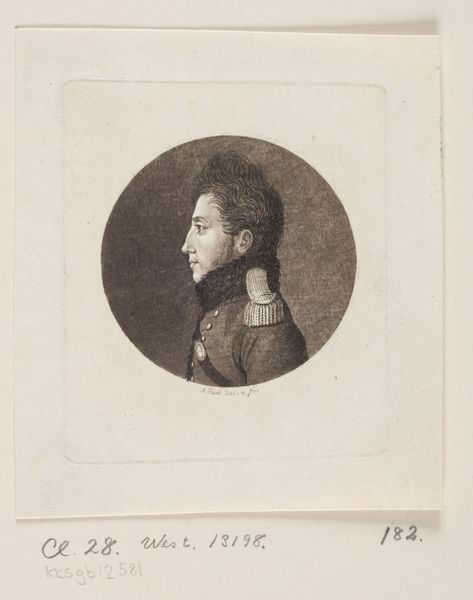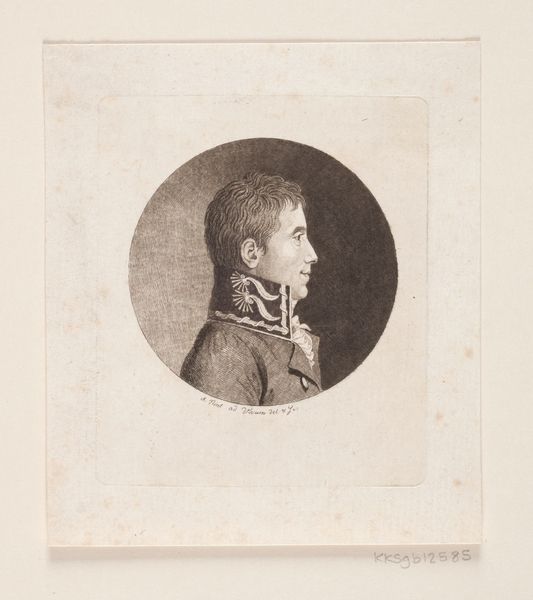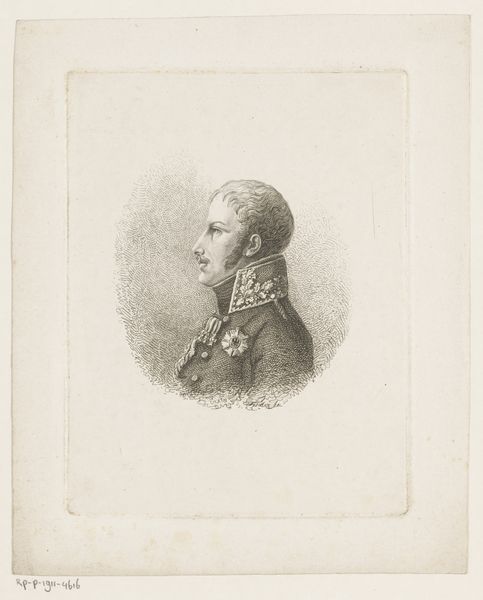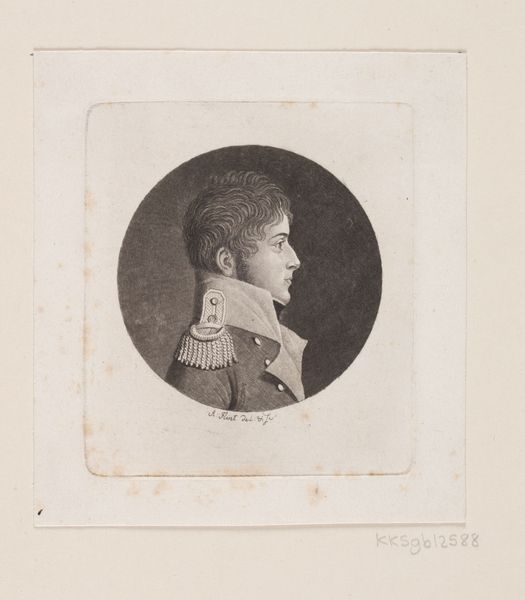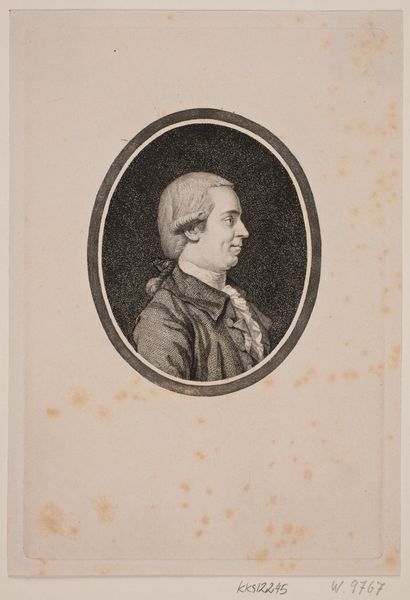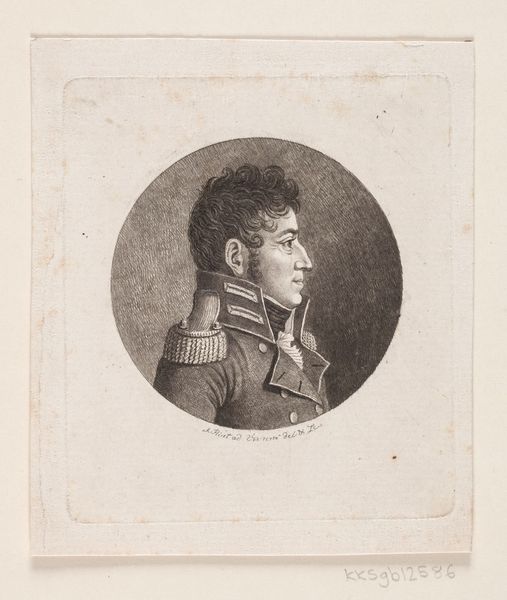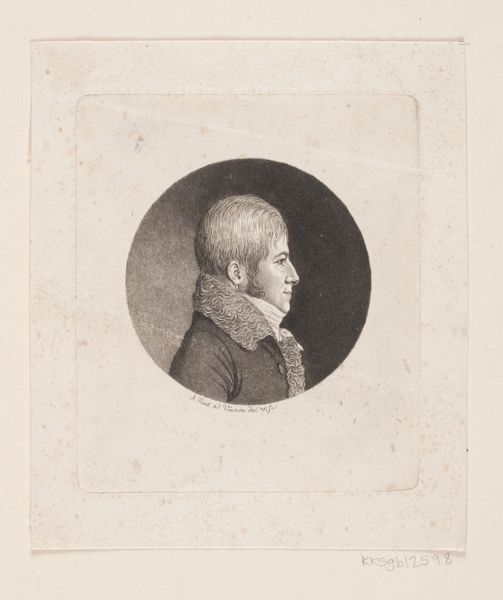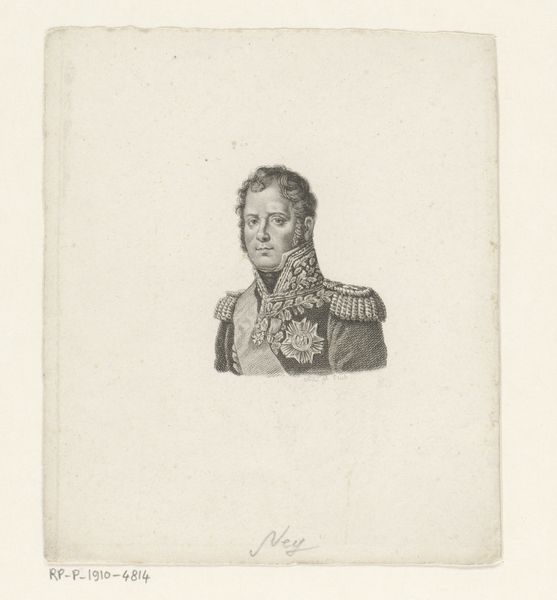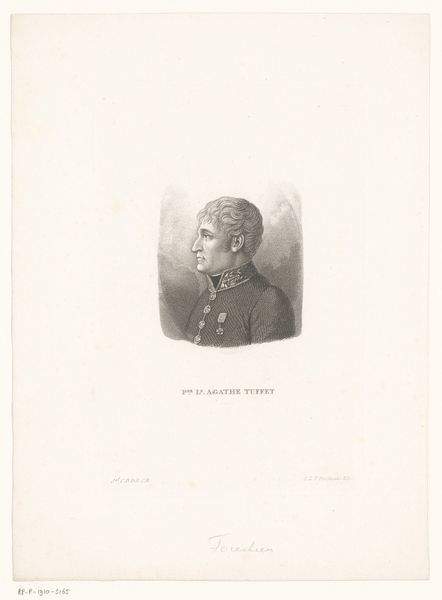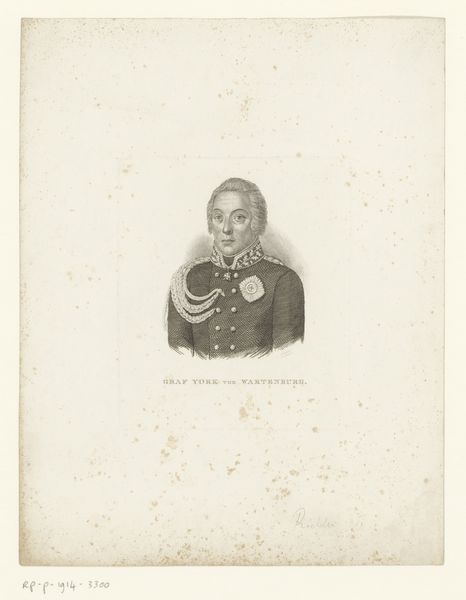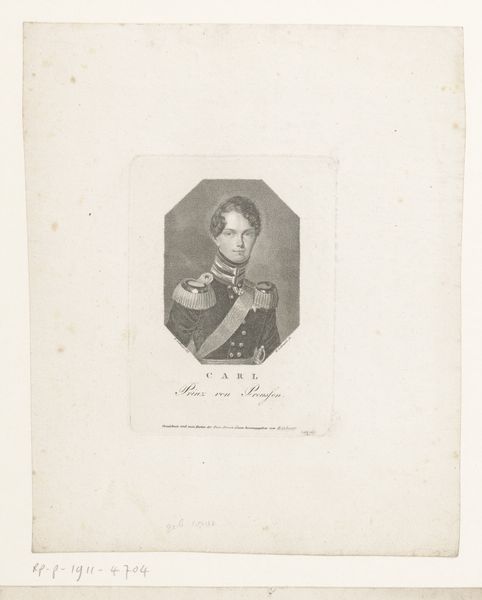
print, engraving
#
portrait
#
neoclacissism
# print
#
classical-realism
#
line
#
history-painting
#
academic-art
#
engraving
Dimensions: 63 mm (None) (billedmaal), 95 mm (height) x 81 mm (width) (plademaal)
This is a print of Julius Ferdinand Wedelfeldt, created by Andreas Flint. The most striking visual element is Wedelfeldt’s military attire, particularly the shoulder decorations. These epaulettes are not mere ornaments; they are potent symbols of authority, rank, and power. We see echoes of these symbols in the armorial bearings of medieval knights, the elaborate robes of monarchs, and even in the stylized uniforms of modern-day leaders. Consider how this symbol has evolved. In ancient Rome, the toga distinguished citizens of high status. Later, the Renaissance saw the rise of portraiture, where clothing served to signal social standing. The epaulette, in this sense, is a direct descendant of these earlier forms, yet it also carries the weight of collective memory and cultural conditioning. It's a visual shorthand for order, discipline, and the potential for both protection and oppression. Through symbols like these, images resonate with us on a deep, subconscious level. These are not just representations, but carriers of cultural memory. The symbol resurfaces, evolves, and takes on new meanings, each time echoing something ancient, profound, and deeply human.
Comments
No comments
Be the first to comment and join the conversation on the ultimate creative platform.

